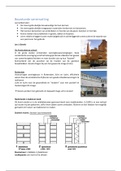Tentamen (uitwerkingen)
TESOL, Chapter 1 UPDATED ACTUAL Exam Questions and CORRECT Answers
- Vak
- Instelling
TESOL, Chapter 1 UPDATED ACTUAL Exam Questions and CORRECT Answers listening - CORRECT ANSWER language - a complex process that allows us to understand spoken bottom-up processing - CORRECT ANSWER incoming speech signals top-down processing - CORRECT ANSWER and expectations t...
[Meer zien]













